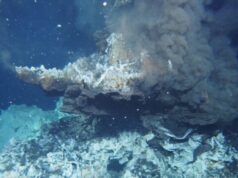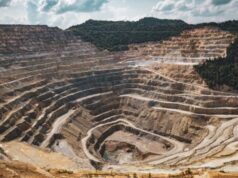A study of more than 6,000 marine fossils from the Antarctic shows that the mass extinction event that killed the dinosaurs was sudden and just as deadly to life in the polar regions.
Previously, scientists had thought that creatures living in the southernmost regions of the planet would have been in a less perilous position during the mass extinction event than those elsewhere on Earth.
The research, published today in the journal Nature Communications, involved a six-year process of identifying more than 6,000 marine fossils ranging in age from 69- to 65-million-years-old that were excavated by scientists from the University of Leeds and the British Antarctic Survey on Seymour Island in the Antarctic Peninsula.
This is one of the largest collections of marine fossils of this age anywhere in the world. It includes a wide range of species, from small snails and clams that lived on the sea floor, to large and unusual creatures that swam in the surface waters of the ocean. These include the ammonite Diplomoceras, a distant relative of modern squid and octopus, with a paperclip-shaped shell that could grow as large as 2 metres, and giant marine reptiles such as Mosasaurus, as featured in the film Jurassic World.
With the marine fossils grouped by age, the collection shows a dramatic 65-70% reduction in the number of species living in the Antarctic 66 million years ago — coinciding exactly with the time when the dinosaurs and many other groups of organisms worldwide became extinct at the end of the Cretaceous Period.
James Witts, a PhD student in the University’s School of Earth and Environment and lead author of the new research paper said: “Our research essentially shows that one day everything was fine — the Antarctic had a thriving and diverse marine community — and the next, it wasn’t. Clearly, a very sudden and catastrophic event had occurred on Earth.
Find your dream job in the space industry. Check our Space Job Board »
“This is the strongest evidence from fossils that the main driver of this extinction event was the after-effects of a huge asteroid impact, rather than a slower decline caused by natural changes to the climate or by severe volcanism stressing global environments.”
The study is the first to suggest that the mass extinction event was just as rapid and severe in the polar regions as elsewhere in the world.
Previously, scientists had thought that organisms living near the Poles were far enough away from the cause of the extinction to be badly affected — whether this was an asteroid impact in the Gulf of Mexico, where a giant buried impact crater is found today, or extreme volcanism in the Deccan volcanic province in India. Furthermore, it had been proposed that animals and plants in the polar regions would have been more resilient to global climatic changes associated with an asteroid impact as a result of living in environments that were always strongly seasonal. For example, life near the Poles has to adapt to living in darkness for half of the year and to an irregular food supply.
Professor Jane Francis from the British Antarctic Survey, a co-author of the study, said: “These Antarctic rocks contain a truly exceptional assemblage of fossils that have yielded new and surprising information about the evolution of life 66 million years ago. Even the animals that lived at the ends of the Earth close to the South Pole were not safe from the devastating effects of the mass extinction at the end of the Cretaceous Period.”
While some previous studies have suggested that the demise of the dinosaurs and other groups was gradual, many scientists argue that the dinosaur fossil record in particular is patchy, and cannot compete with marine fossils in terms of quantity and biodiversity.
James Witts said: “Most fossils are formed in marine environments, where it is easy for sediment to accumulate rapidly and bury parts of animals, such as bones, or bodies of creatures with a hard shell. For a dinosaur or other land animal to become fossilised, a series of favourable events are needed, such as for bones to fall into stagnant water and be buried rapidly to prevent decomposition, or be washed out to sea by rivers.
“This means that marine fossils are generally much more abundant. They can give us a much larger data set for studying how ecosystems and biodiversity change over time in the geological past, and enable us to draw robust conclusions about events during periods of rapid environmental change, like mass extinctions.”
Source:University of Leeds
Journal Reference:
- James D. Witts, Rowan J. Whittle, Paul B. Wignall, J. Alistair Crame, Jane E. Francis, Robert J. Newton, Vanessa C. Bowman. Macrofossil evidence for a rapid and severe Cretaceous–Paleogene mass extinction in Antarctica. Nature Communications, 2016; 7: 11738 DOI:10.1038/NCOMMS11738










